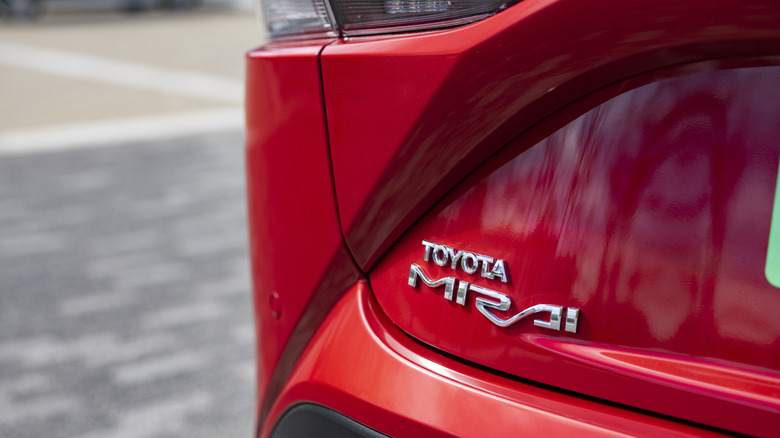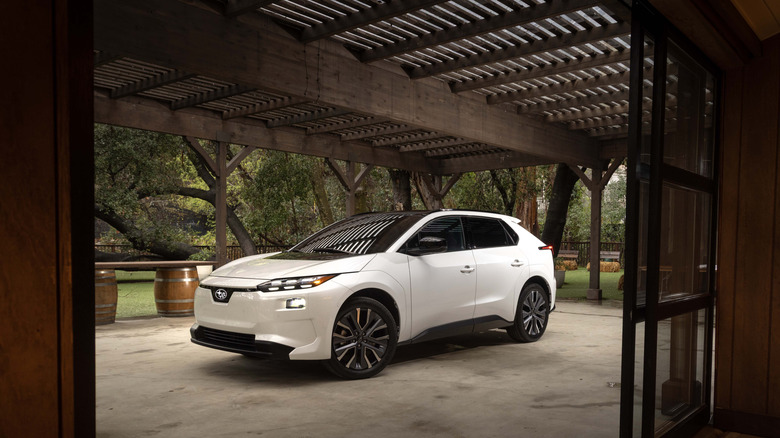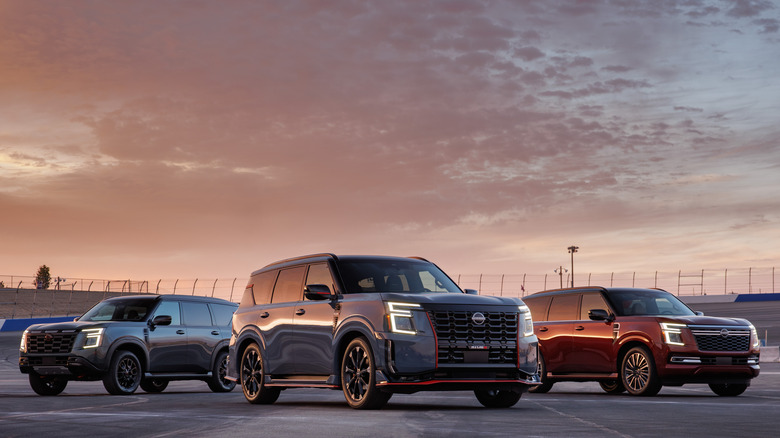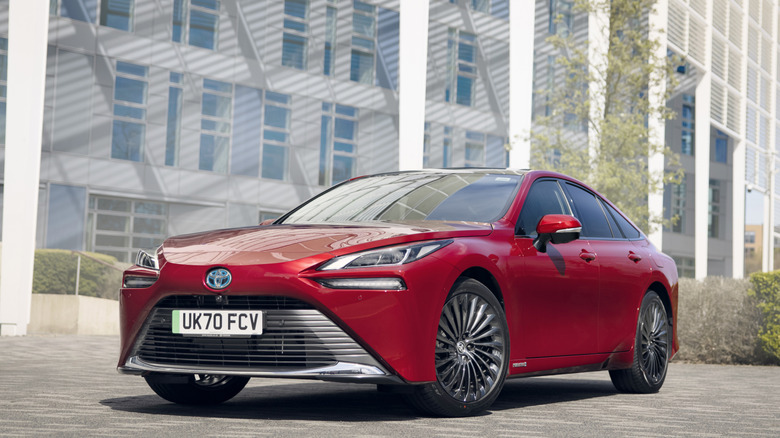5 Japanese Cars With The Worst Resale Value In 2025
Depreciation can be both a positive and a negative, it all depends on when you are buying the car. If you're shopping for something three or five years old, then great news, depreciation will have sapped away at much of the car's value, and you'll be able to pick up something in good condition, with reasonable miles, for 60, 50, or even 40% of its original purchase price.
However, if you're the first customer, then prepare to take a bit of a hit. According to Kelley Blue Book (KBB), a new car will drop around 30% of its value within the first two years, and that's provided you keep it maintained and in good condition. A $50,000 car, then, could be worth just $35,000 after just two years on the road.
Some cars depreciate more than others, and so if you're in the market for a new ride, it's worth having an idea of the expected future value your car will retain. This article focuses specifically on Japanese cars with appearances from brands such as Toyota, Lexus, and Nissan. Traditionally, Japanese brands actually perform very well when it comes to retaining value, but there are always exceptions. Entries have been ranked in order of their residual values after five years, with the worst performers being saved until last.
5. Subaru Solterra
The Solterra was a bold new step for Subaru, as it marked the first time in which the Japanese automaker had put down its favored boxer engine and instead picked up an all-electric drivetrain. So, the Solterra does not thunder down the road with that unmistakable warble but instead progresses with an unidentifiable hum. Some would argue the Solterra loses some of that all-important Subaru character, while no doubt others would suggest it's about time Subaru looked to the future and joined the EV party.
Regardless of which side of the fence you stand on, there is no denying that the Solterra is not a great performer when it comes to residual values. After five years on the road, this EV retains just 40.3% of its original value, which means drivers are losing roughly 12.5% of the purchase price every single year.
It is worth noting that this is the only Subaru to feature on this list, and we'll reiterate that it is the brand's only EV. That's no coincidence, as EVs do tend to depreciate more than gas-powered vehicles. Historically this has made sense, as gas vehicles are still way more popular, and as many EVs have been purchased with a $7,500 discount courtesy of the now-cancelled federal tax credits scheme, that discount effectively translates through to used prices.
4. Nissan Leaf
Right on cue, here is another badly depreciating electric vehicle to prove the aforementioned point. Unlike the Subaru Solterra, which is new to the industry, the Nissan Leaf has been there, done that, and got the t-shirt. It really was the first mass-produced EV to do everything a gas-powered car could, at a sensible price. It's the Prius of the EV world, essentially.
Despite that, it still depreciates heavily, but that hasn't stopped buyers from shelling out for one. Over 11,000 units sold just last year, which is commendable for an aging EV, and what's more, the new Leaf has just been announced with a price tag of only $29,990 (excludes destination and handling charges, tax, title, license and options) — making it the cheapest EV currently on sale in the US.
Used shoppers can snag even bigger bargains, though, as the Leaf retains just 37.7% of its original MSRP after five years. Sadly, it's one of three Nissan models to feature here too, which is perhaps a sign of Nissan's current position in the market. The storied Japanese automaker is on the brink of disaster, and after a possible merger with Honda fell through, the future of the company is still left to be decided.
3. Nissan Armada
We test drove and reviewed the 2025 Nissan Armada recently and found it to be luxurious, mightily powerful, and more competitive than the older model it replaces. However, residual values of the model haven't quite caught up with our glowing review of the new model, and CarEdge confirms this by suggesting that — after a five-year ownership period — an Armada will be worth just 37.7% of its original purchase price.
The 2026 Armada's price kicks off at $58,840, subject to destination and handling charges, tax, title, license and options. If we apply CarEdge's estimate here to a base 2026 model, we can assume that, by 2031, that same Armada would be worth just $22,183. This represents a loss of $36,657, or $7,331 per year. KBB echoes these values, providing an estimated five-year value of $23,547 while also suggesting that the total cost of ownership throughout those five years will swell to almost $93,000. This figure includes the purchase price, maintenance and running costs, plus it also factors in depreciation.
These are some scary figures for those considering the purchase of a brand-new Nissan Armada, but once again, it's great news for those that prefer a model with a few years and miles already under its belt. Consider also that the Armada's key rivals, the Toyota Sequoia and Ford Expedition, retain 67.7% and 41% respectively, it becomes immediately apparent that a used Armada is a much cheaper alternative once those five years have passed. The differences in percentages represent thousands of dollars, even tens of thousands in the Sequoia's case.
2. Nissan Ariya
Whereas the Leaf is Nissan's entry-level, budget-oriented electric offering, the Ariya is its bigger, fancier brother. It sports more of an SUV-esque stance, is equipped with more tech and power as standard, and naturally, costs a good deal more as well. Upon review, we found the Ariya to be stuck in the Leaf's shadow, and residual values echo our findings too.
The Ariya manages to retain just 36.1% of its original purchase value after five years, which makes it not only the second-worst performer on this list of Japanese cars but also the single worst performing electric vehicle currently on sale in the USA. In terms of depreciation, at least. These aren't the kind of accolades Nissan wants to be collecting right now.
Unusually, it's difficult to pinpoint exactly why the Ariya loses so much value, as it's actually packed full of some quite desirable and luxurious features. For example, the Ariya's dashboard is well-dressed in premium materials and wood, is finished with a single, vertical HVAC vent, and sports modest screens for both the driver and other occupants — steering away from the current trend of mammoth screens just for the sake of it. It's also quite affordable too, coming in around $10,000 more expensive than the Leaf, which is a fair trade-off for the extra size, pace, and amenities. Regardless, the public just isn't interested. New Ariya sales aren't all that bad, with almost 15,000 shifted in 2025 alone, but according to these depreciation figures, nobody wants a used one at almost any cost.
1. Toyota Mirai
It doesn't matter where you get your data from, we'll bet every list out there for 'most depreciated cars' will pretty much always feature this Toyota as the unfortunate winner. At first glance, it might seem strange, as Toyota as an automaker historically retains value better than most, and the Mirai does a lot of things right. Its looks are reserved and hardly controversial, it is certainly well equipped, with a modern infotainment system, smart alloy wheels, and a comfortable interior, plus it benefits from Toyota's Safety Suite, which makes it ideal for families.
Here's the kicker, though; it packs a hydrogen fuel-cell powertrain, can only be purchased in the state of California, and it sports an MSRP of $51,795, and that's without taxes, title, and dealer fees. So yes, this Toyota has the worst resale value for a reason, but that doesn't necessarily make it a bad car. It caters to a really niche corner of the market, and so demand is terribly low for the car. Low demand naturally leads to low prices, and so we see a huge drop off in value.
To put some numbers on the Mirai's pricing performance, CarEdge reports that it will drop a whopping 79% of its initial price within the first five years, settling on a residual price of just $13,182. That's a remarkable hit to take, but for the deep-pocketed eco-warrior out in California, perhaps it's a small price to pay to know that nothing but water is trickling out of your exhaust pipe. In truth, we commend Toyota for making it, and we congratulate those brave enough to give the bold Mirai a real go.
Methodology
This article is not designed to shine a negative light on any make or model, but instead, it looks to provide information on the worst performers when it comes to depreciation, based on data collected from sources such as Kelley Blue Book and CarEdge. National averages have been taken from these sources, and in order to ensure the models featured here satisfy the description of having the "worst resale value," each loses more in the first five years than the national average.
For clarity, a resale value 45% of the original MSRP is what KBB classifies as the national average after five years, while CarEdge suggests it sits closer to 52%. We have also looked to see what the models featured are being both advertised and sold at, in an effort to double-check the depreciation figures quoted by both of these sources. In many cases, the models featured depreciate heavily due to a very particular reason, such as the Toyota Mirai, which boasts a hydrogen fuel-cell powertrain, and the value retained does not reflect what owners of other models from the automaker can expect to achieve.
It is also worth noting that, while this data comes from reputable sources and is based on historical performance, past performance is no guarantee of future results, and so the quoted figures should be taken as a guide rather than as gospel.






